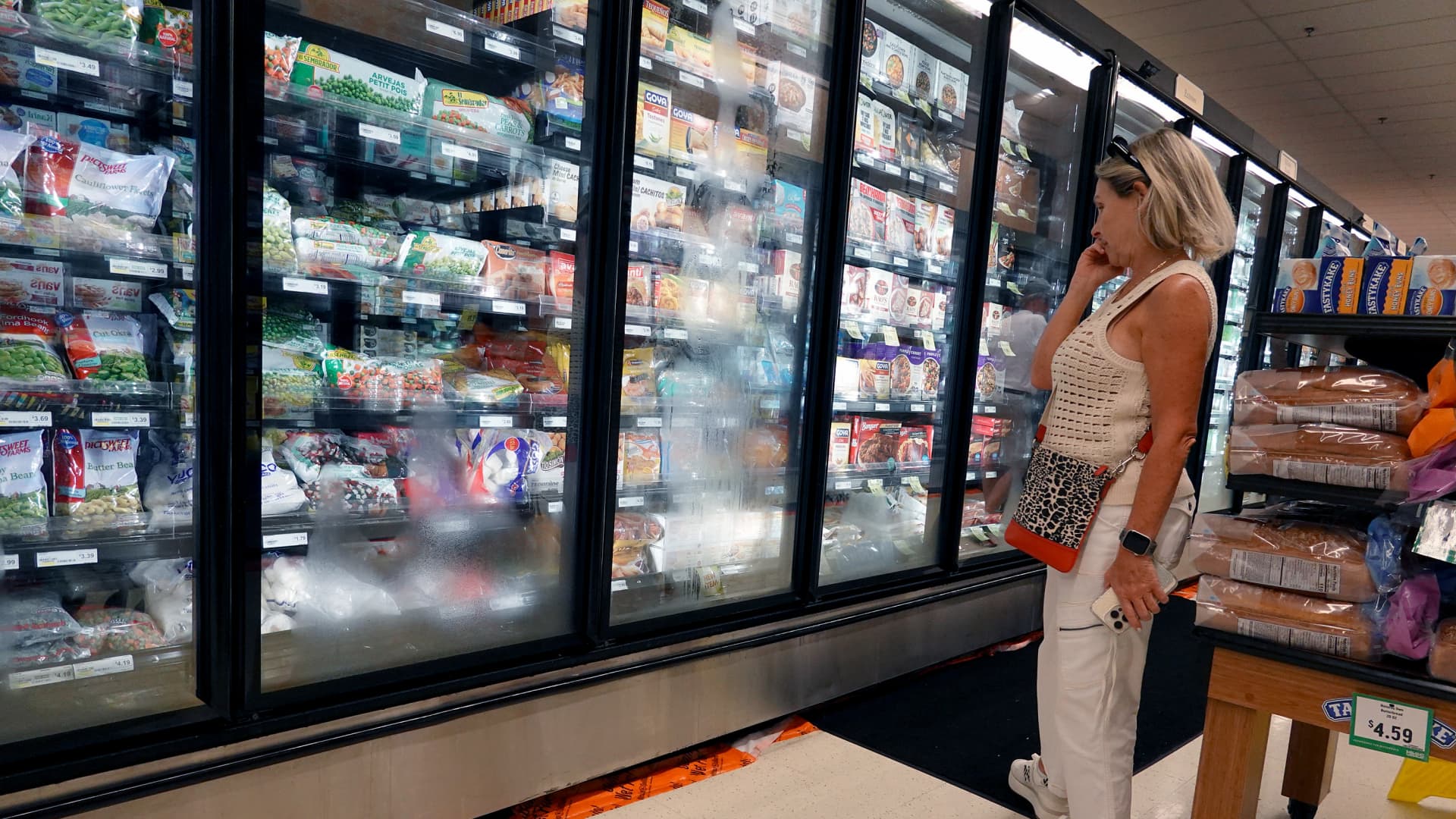A shopper makes their way through a grocery store on July 12, 2023 in Miami, Florida.
Joe Raedle | Getty Images News | Getty Images
As high inflation persists, many workers may be struggling to come up with the cash to cover an unexpected emergency expense.
To that point, 63% of employees are unable to cover a $500 emergency expense, according to a new survey from SecureSave, a provider of a financial technology platform to help employers provide emergency savings benefits.
In another sign of trouble, hardship withdrawals, whereby emergency money is taken from a retirement account, are on the rise, according to recent reports.
“All people are really looking for in life is to be secure, to not have to worry about if something goes wrong, what are they going to do?” said personal finance expert Suze Orman, a co-founder of SecureSave.
“The only way you can ever be secure is when you have savings,” Orman said.
More from Personal Finance:
How to save for retirement when student loan payments restart
3 steps to take as emergency savings drop and credit card balances rise
How much emergency savings people think they need
New changes included in Secure 2.0 — a law signed into law in December that focuses on improving retirement savings — aim to make it easier for workers to build and access emergency cash.
But experts say it may take some time before workers have access to those features.
‘Scratching and clawing’ to find emergency money
Respondents told SecureSave they would either turn to a friend or family member for money, with 19%, or cover the expense with a credit card, with 18%. Just 4% would ask their employer for help, according to the survey of 1,600 adults taken between June and July.
Even high earners are struggling, with 64% of employees who are earning more than $100,000 indicating that financial stress has affected their productivity at work. Meanwhile, 35% said they are living paycheck to paycheck, and 64% said their financial stress has affected their work productivity.
“People are out of pandemic money” and have racked up credit card balances and are still paying higher prices due to inflation, said Devin Miller, co-founder and CEO of SecureSave.
“They’re scratching and clawing to find money they can anywhere,” Miller said.
Secure 2.0 emergency savings provisions
The Secure 2.0 legislation that was signed into law in December included two changes aimed at helping to make it easier for workers to access emergency cash.
The first change made it so employees may save up to $2,500 in after-tax money in a separate account alongside their retirement accounts. Workers would potentially be automatically enrolled in the programs, which would defer the money automatically through payroll deductions.
The second change would allow workers to withdraw up to $1,000 per year penalty free from their retirement plans per calendar year to cover emergency expenses. Those funds would need to be repaid within a certain time frame before an employee could make another similar withdrawal.
While those new optional features were slated to be included in retirement plans as soon as 2024, there may be some delays.
“It looks like the $2,500 in the in plan is not going to be immediately adopted until there’s a much more certain regulatory world,” said Craig Copeland, director of wealth benefits research at the Employee Benefit Research Institute.
It may take another two to three years before the $2,500 emergency savings provision makes a difference, Copeland estimated.
Meanwhile, the $1,000 provision may be more easily adopted next year, particularly for plans that are already providing hardship withdrawals, he said.
The Secure 2.0 legislation includes a lot of mandatory changes for 401(k) plan record keepers that need to be built and deployed, Miller noted. The IRS recently announced a two-year delay to a Secure 2.0 change that would have required retirement catch-up contributions made by high earners to be done with after tax money.
Because the $2,500 emergency savings feature is optional, it may take more time to develop, Miller said.
New awareness of need for emergency savings
However, experts say the legislative changes are still a big step forward for emergency savings.
“This whole conversation has really brought to the fore the importance of emergency savings and emergency savings accounts,” said Emerson Sprick, senior economic analyst at the Bipartisan Policy Center.
Now, the financial industry, consumer advocates and others are starting to think about what comprehensive emergency savings coverage could look like, he said.
“We’ve made this permanent connection between retirement security and short-term emergency savings,” Miller said.
“There is this important dynamic between improving people’s short-term liquidity and how that improves their retirement readiness,” he said.
Employers who are interested in offering emergency savings benefits are largely focusing on plans outside of the Secure 2.0 provisions, Copeland noted.
SecureSave, which provides those plans, is anticipating rapid growth in the next 15 years, according to Miller.
Some employers like Starbucks have added emergency savings plans for workers. Meanwhile, BlackRock has a philanthropic emergency savings initiative that is working with companies like Levi’s to make plans accessible to employees.
For workers, these benefits offer a new opportunity to change their savings behavior, according to Orman.
“The employees understand very well why they want it, why they need it,” Orman said. “Who really needs to understand it is the employer.”

